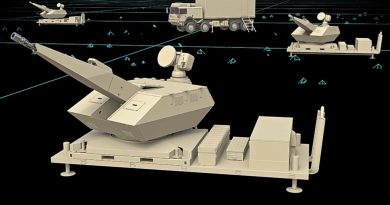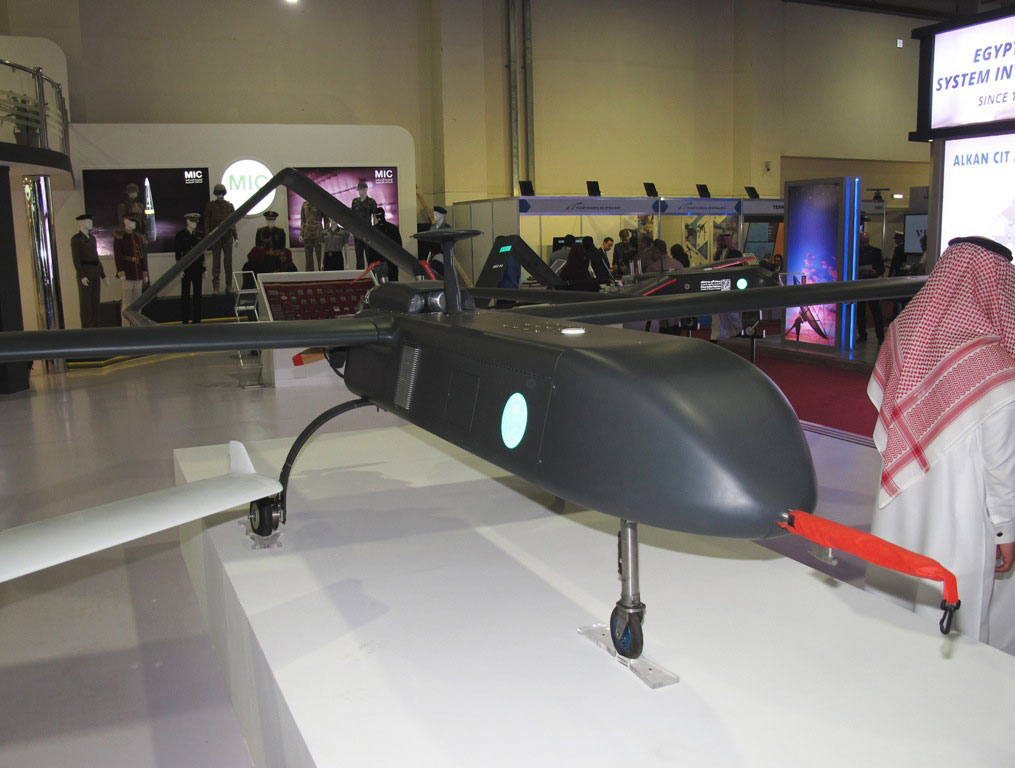
EDEX 2018 – Saudi Arabia: SG-03 UAS soon in production
Among the many Middle East exhibitors present at EDEX, Saudi Arabia Prince Sultan Advanced Tech. Research Institute (PSATRI) was showing its latest developments in the unmanned air systems field. PSATRI was founded in 2008 by the King Saudi University (KSU) and the Royal Saudi Air Force (RSAF) with the aim of conducting applied scientific and technical research and development to support the Royal Saudi Air Force and other Saudi military and security users in increasing their effectiveness. PSATRI includes six laboratories, the Autonomous Vehicles Laboratory being dedicated to UAS.
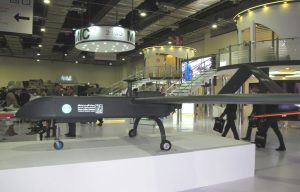
The latest product developed is the Sky Guard SG-03, a tactical UAS that has now ended flight tests and is ready for production; seen at IDEX 2017, more details have now been released. Born from a requirement issued by the Saudi Armed Forces, the SG-03 has a maximum take-off weight of 250 kg, 50 kg of which represent the payload. With an 8 meters wingspan, it can reach a maximum altitude of 18,000 feet. Maximum speed is 100 knots, the SG-03 being powered by a 44 hp engine with electronic fuel injection and can operate at temperatures between –20 and +65°C, endurance being 8 hours. The airframe is made of carbon composite and features an inverted V-tail with rudder-vators, the pushing propeller being at the rear of the fuselage.
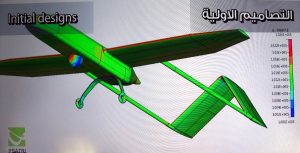
This hosts two communications links, the primary being an S/C band directional line-of sight, while the secondary is an UHF omni-directional link, both with a 200 km range. Navigation is provided by a flight control computer, GPS/INS platform with air data assistance, and a flight director, way point navigation being typically adopted for most of the missions. The fuselage can accommodate different types of optronic, radar or EW sensors. Visual reconnaissance is carried out with electro-optic day and night IR systems; at IDEX it was fitted with a nose-mounted L-3 Wescam MX-10 gimballed payload, however the company stated that a bigger MX-15 gimbal might be fitted under the belly.
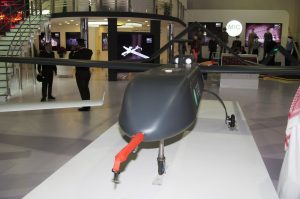
It can also adopt radar sensors, such as synthetic aperture radars with ground moving target indicator capability, allowing multiple objects detection and tracking even in low visibility conditions. Finally an airborne signal intelligence payload can be fitted.
A system is made of two air vehicles, one containerised ground control station, one containerised ground data terminal, and one portable ground control station. The SG-03 is now at pre-production level. PSATRI being a research and development entity, thus not having production capabilities, it is now in contact with an undisclosed Saudi company to which it will transfer all data needed for production. The SG-03 should then enter service with Saudi forces, although no timeframe or numbers were provided.

